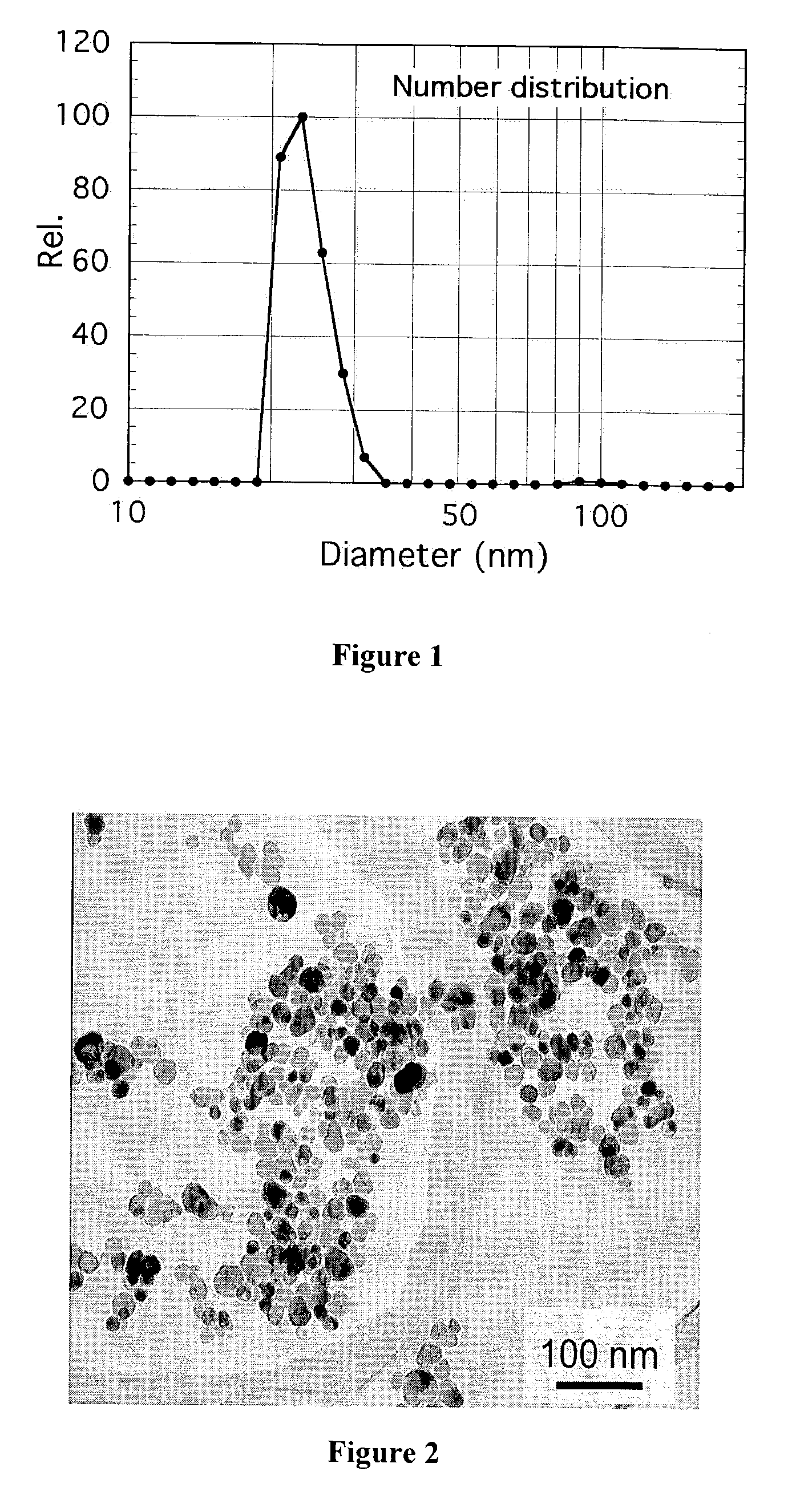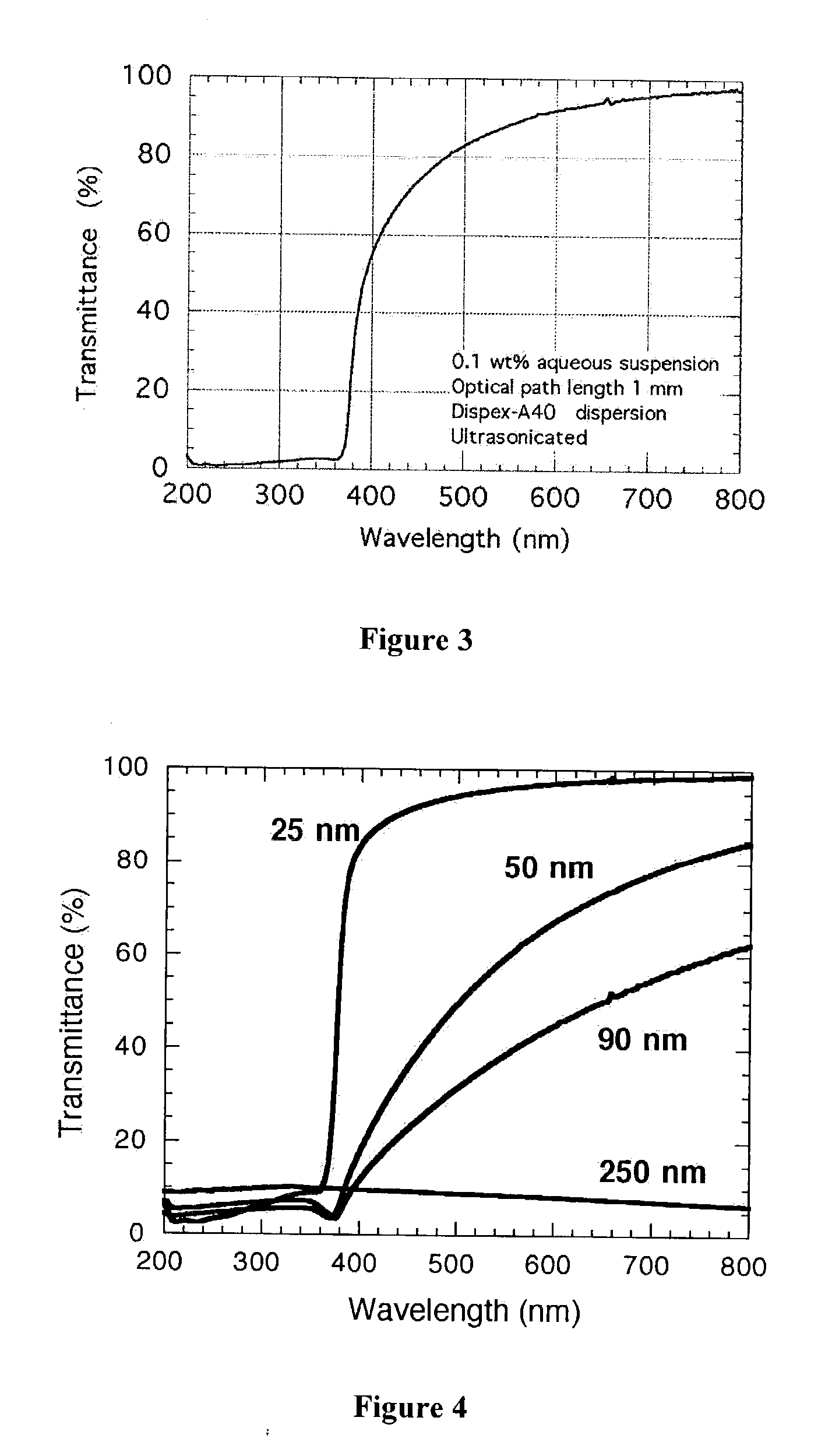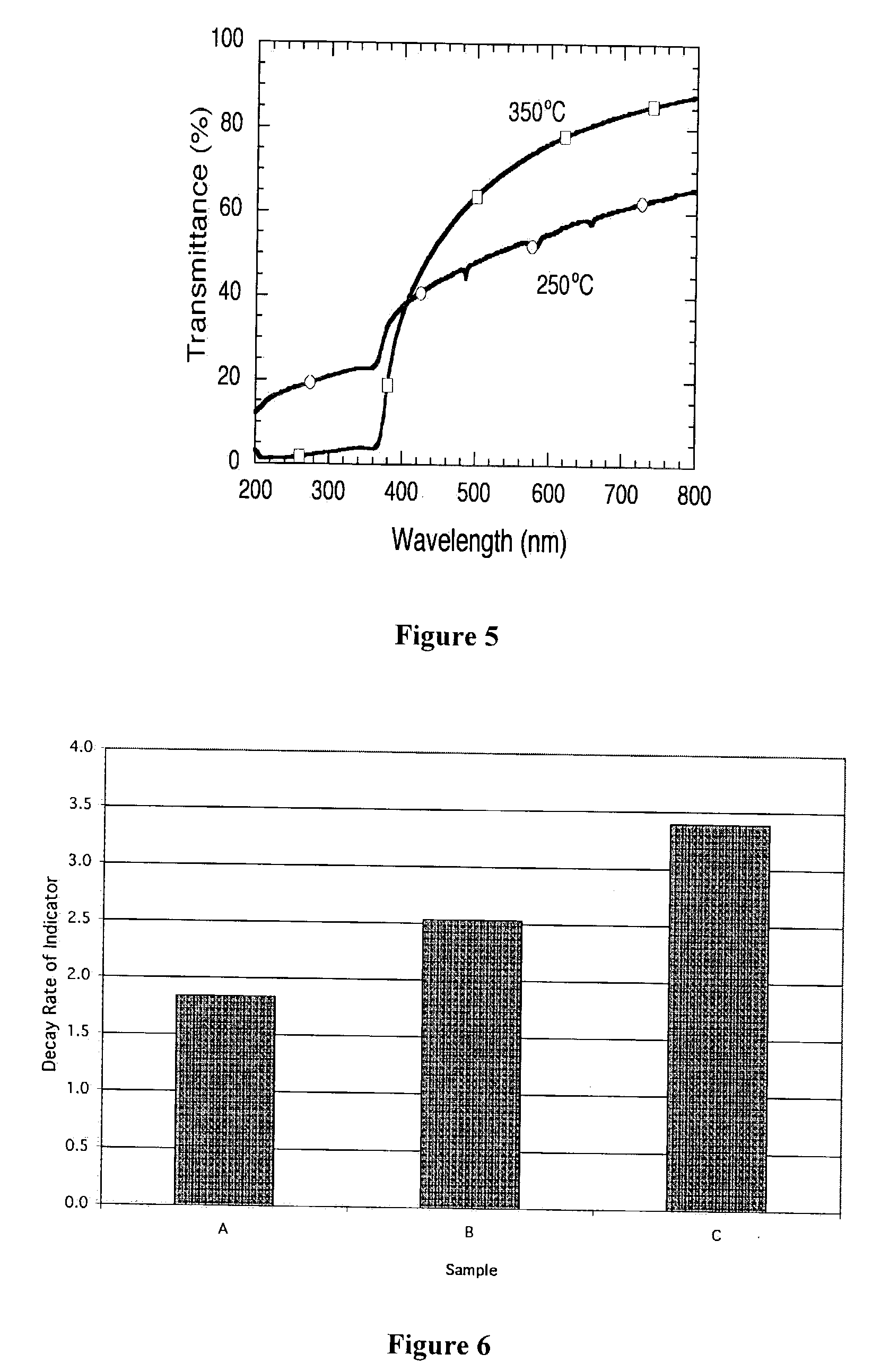Substantially visibly transparent topical physical sunscreen formulation
a sunscreen formulation and visibly transparent technology, applied in the field of substantial visibly transparent topical sunscreen formulation, can solve the problems of harmful effects, skin aging, harmful effects, etc., and achieve the effects of long-term effects of chemical sunscreens on skin and general health of users, and prevent skin cancer
- Summary
- Abstract
- Description
- Claims
- Application Information
AI Technical Summary
Problems solved by technology
Method used
Image
Examples
example 2
Stabilisation of ZnO Particles by Heat Treatment
[0128] A sample milled in the same manner as in Example 1, was heat treated at 250.degree. C. for 1 hour in air and cooled to room temperature. Examination of the heat-treated powders by X-ray diffraction showed that the phases present in the powder consisted of ZnO and NaCl.
[0129] Examination of the milled and heat treated sample using X-ray diffraction after removal of the NaCl and drying at 60.degree. C. showed that the powder consisted of only the ZnO phase and the crystallite size estimated from the broadening of diffraction peaks was 18 nm. formulating sunscreens would understand that numerous variations of the specific quantities used and / or substitutions of the specific choice of components may be made without altering the essential characteristics of a sunscreen so formulated. All such variations are considered to be within the scope of the present invention for which the following examples are for illustrative purposes only.
example 1
Preparation of Nano-Sized ZnO Using Mechano-Chemical Processing
[0130] The raw materials used were anhydrous ZnCl.sub.2 powder (Fluka, >98.0%, -10 mesh), Na.sub.2CO.sub.3 powder (Sigma, 99.8%, -100 mesh), and NaCl powder (Cleeze, 99.5%, -10 mesh). 5 kg of the starting powder mixture of ZnCl.sub.2, Na.sub.2CO.sub.3 and NaCl in a molar ratio of 1:1:3.4 corresponding to the reaction
ZnCl.sub.2+Na.sub.2CO.sub.3+3.4 NaClZnO+5.4 NaCl+CO.sub.2
[0131] was loaded into a 33 litre attrition mill, together with 100 kg of 5 mm hardened steel grinding balls. Mechanical milling was carried out for 90 min using an effective impeller tip speed of 4 m / s. The temperature within the mill during milling was approximately 75.degree. C. Following milling, the powder was heat treated at 350.degree. C. for 1 hour in air, and cooled to room temperature. Examination of the heat-treated powder by X-ray diffraction showed that the phases present in the powder consisted of ZnO and NaCl.
[0132] The milled and heat-tr...
example 6
Method for Making Dry Re-Dispersible ZnO
[0139] A slurry of 30 nm ZnO in water of total mass 853 grams (11.2 wt % ZnO) was prepared and added to a solution of 14.6 grams of stearic acid dissolved in 97.3 grams of hexane. The liquids were mixed together in a Hobart planetary mixer for 1 hour during which time the zinc oxide was transferred from the water to the hexane phase. The water was removed and 4.9 grams of Solsperse 3000 dispersant and 100 grams of hexane were added and the zinc oxide was fully dispersed using a high shear mixer. The hexane was removed by evaporation at 60.degree. C. for 3 hours resulting in a dry, free flowing powder.
[0140] The dry ZnO powder was then dispersed in hexane to form a 0.01 wt % solution using an ultrasonic bath. UV-Vis spectroscopy measurements carried out on the sample prior to drying and the sample after drying and redispersion in a 10 mm pathlength sample holder are shown in FIG. 9. The visible specular transmittance curve for the dried and red...
PUM
 Login to View More
Login to View More Abstract
Description
Claims
Application Information
 Login to View More
Login to View More - R&D
- Intellectual Property
- Life Sciences
- Materials
- Tech Scout
- Unparalleled Data Quality
- Higher Quality Content
- 60% Fewer Hallucinations
Browse by: Latest US Patents, China's latest patents, Technical Efficacy Thesaurus, Application Domain, Technology Topic, Popular Technical Reports.
© 2025 PatSnap. All rights reserved.Legal|Privacy policy|Modern Slavery Act Transparency Statement|Sitemap|About US| Contact US: help@patsnap.com



